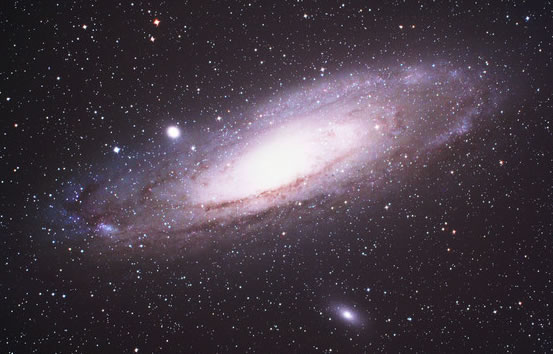Physicists are desperate to explain shortcomings in our understanding of the behaviour of fundamental particles; an announcement this week from astronomers remind us that the sky can tell us as much -- perhaps sometimes more -- about particles than experiments down here on Earth can.
The announcement focuses on neutrinos, which are pretty mysterious particles. They were predicted to exist by particle physicists as early as the 1930's, but not detected directly experimentally the late 1950's. Even today, performing experiments on neutrinos is immensely difficult, because they can speed straight through solid matter without ever leaving a trace they were there. Even more peculiar, according to the so-called standard model of particle physics, neutrinos should have no mass whatsoever. But from observations of the neutrinos naturally produced in the Sun, astronomers confirmed in the late 90's that neutrinos must, in reality, actually have mass, contrary to the standard model of particle physics. There was no other way to make sense of the neutrinos detected arriving from the Sun.
In fact it's been increasingly realized that astronomical scales are an excellent place to detect the effects of the mass associated with neutrinos. Because they have effects on the early Universe, neutrinos leave tell-tale signs in the distribution of matter in the present-day cosmos. Work from University College London published this week in Physical Review Letters has used a new survey, known as MegaZ, of the positions of 700,000 galaxies, in combination with existing astronomical data, to put a tight upper limit on the possible mass of neutrinos. The limit says that the mass must be smaller than 0.3 of an electron volt -- that's a fraction of a billionth of a single atom. That level of *upper* limit is actually particularly significant because it's getting close to a *lower* limit on the mass set by other observations (like those neutrinos which arrive from the Sun). We're squeezing the result between a lower and upper bound; sooner-or-later we'll have to get a measurement of the actual mass.
To put it in context, the new upper limit's a factor of 2 tighter than the limits set by previous galaxy surveys. But, on the other hand, it's not actually much tighter than the limit set by studies of another tracer of matter in the Universe, the so-called Lyman Alpha forest. The nice thing about the new work is that some of the assumptions made in doing the calculation from galaxies are rather different from the assumptions made in doing the calculation from the Lyman alpha forest. So that both of these methods are pointing to the same limit means we can be increasingly confident neutrino masses are smaller than that 0.3 electron volt. That said, there are still assumptions made in the way these calculations are done, so there's some possibility the limits will have to be revised as new and more constraining surveys come along.
But overall it's exciting that astronomical observations can tell us more about a tiny, elusive particle than direct experiments can here on Earth.










Comments
Add a comment